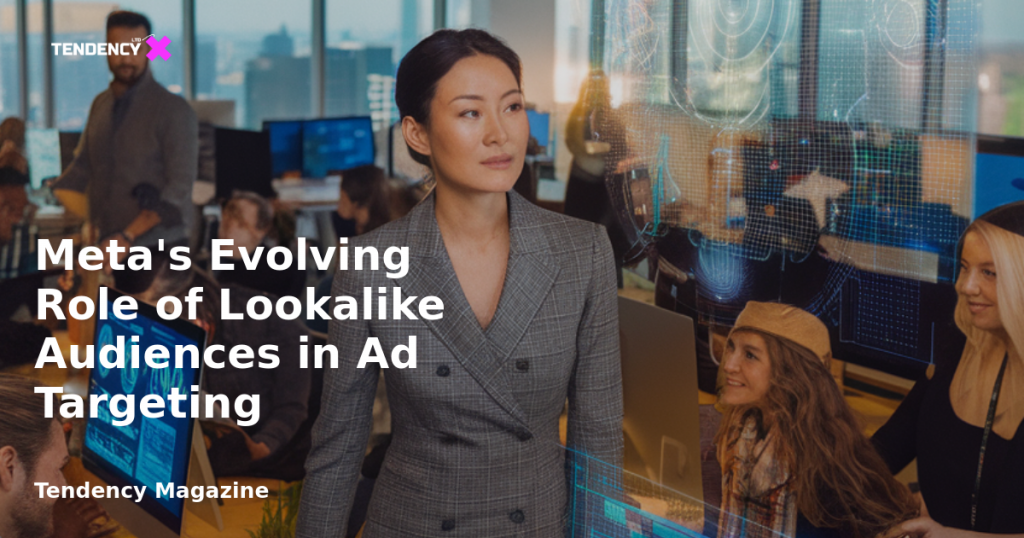Meta’s Evolving Role of Lookalike Audiences in Ad Targeting

Table of Contents
- Introduction to Lookalike Audiences
- The Shift in Meta’s Targeting Strategy
- Advantage+ Campaigns and Their Impact
- Manual Campaigns and Audience Control
- Implications of the Changes
- The Future of Lookalike Audiences
- Conclusion
Introduction to Lookalike Audiences
Lookalike audiences were once a revolutionary tool for advertisers, allowing them to expand their reach to individuals who mirrored their current customer base. By leveraging data from existing users, businesses could create a larger audience segment, theoretically improving ad performance and conversion rates. However, with the rapid advancement of Meta’s algorithmic targeting, the role and necessity of lookalike audiences are under scrutiny.
The Shift in Meta’s Targeting Strategy
Meta’s algorithmic targeting has evolved to perform many functions that lookalike audiences were initially designed to do. This shift raises questions about the continued need for lookalike audiences. While there may still be scenarios where they are beneficial, the automatic expansion of audience targeting by Meta makes it increasingly challenging to limit ads strictly to lookalike audiences.
Initially, this automatic expansion was primarily associated with conversion-focused performance goals. However, it has now extended to a broader range of objectives, reflecting Meta’s ongoing strategy to optimize ad delivery based on performance rather than strict audience parameters.
Advantage+ Campaigns and Their Impact
Advantage+ Campaigns are where most of these changes are first observed. When creating campaigns with objectives like Sales, Leads, or App Promotion, lookalike audiences are now often submitted as suggestions rather than strict targeting criteria. This means that even if you provide a lookalike audience, Meta may extend your ad’s reach beyond this group to optimize performance.
For advertisers accustomed to precise targeting, this can be a significant adjustment. The option to further limit the reach of ads by turning off suggestions is becoming increasingly rare. This change affects various performance goals, such as maximizing conversions, landing page views, and link clicks, making it difficult to maintain control over who sees your ads.
Manual Campaigns and Audience Control
For campaign objectives like Awareness, Traffic, and Engagement, the targeting behavior remains somewhat traditional. Advertisers can still provide lookalike audiences as suggestions, and there is an option to switch to original audience settings for more control. However, even in these cases, Meta’s algorithm may expand the audience if it predicts better results.
The availability of the Advantage+ Lookalike option varies depending on the performance goals. For instance, when using goals like maximizing landing page views or link clicks, the option to restrict targeting disappears, and Advantage+ Lookalike is automatically applied.
Implications of the Changes
These changes signify a substantial shift in how Meta approaches ad targeting. The ability to restrict targeting to lookalike audiences is becoming less consistent, aligning with Meta’s broader strategy of leveraging algorithmic insights to enhance ad performance. This evolution prompts advertisers to reconsider the necessity of lookalike audiences and adapt to a more flexible targeting approach.
The Future of Lookalike Audiences
Given the trajectory of Meta’s targeting capabilities, the future of lookalike audiences seems uncertain. The possibility of phasing out lookalike audiences entirely is becoming more plausible. As algorithmic targeting continues to improve, the reliance on predefined audience segments may diminish, paving the way for more dynamic and performance-driven ad strategies.
Conclusion
In conclusion, while lookalike audiences have played a crucial role in digital advertising for over a decade, their relevance is being challenged by the advancements in Meta’s algorithmic targeting. Advertisers should evaluate the effectiveness of lookalike audiences in their campaigns and prepare for a future where audience targeting is increasingly driven by performance metrics. Embracing these changes can lead to more effective ad strategies and better results in the ever-evolving digital landscape.
2025 Tendency LTD. All rights reserved.

